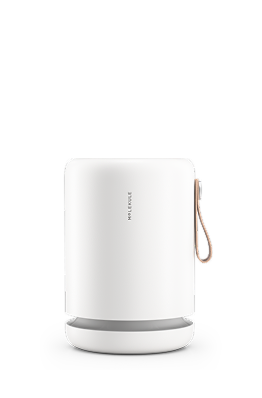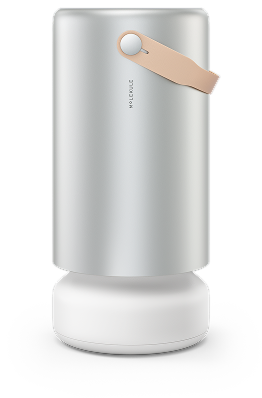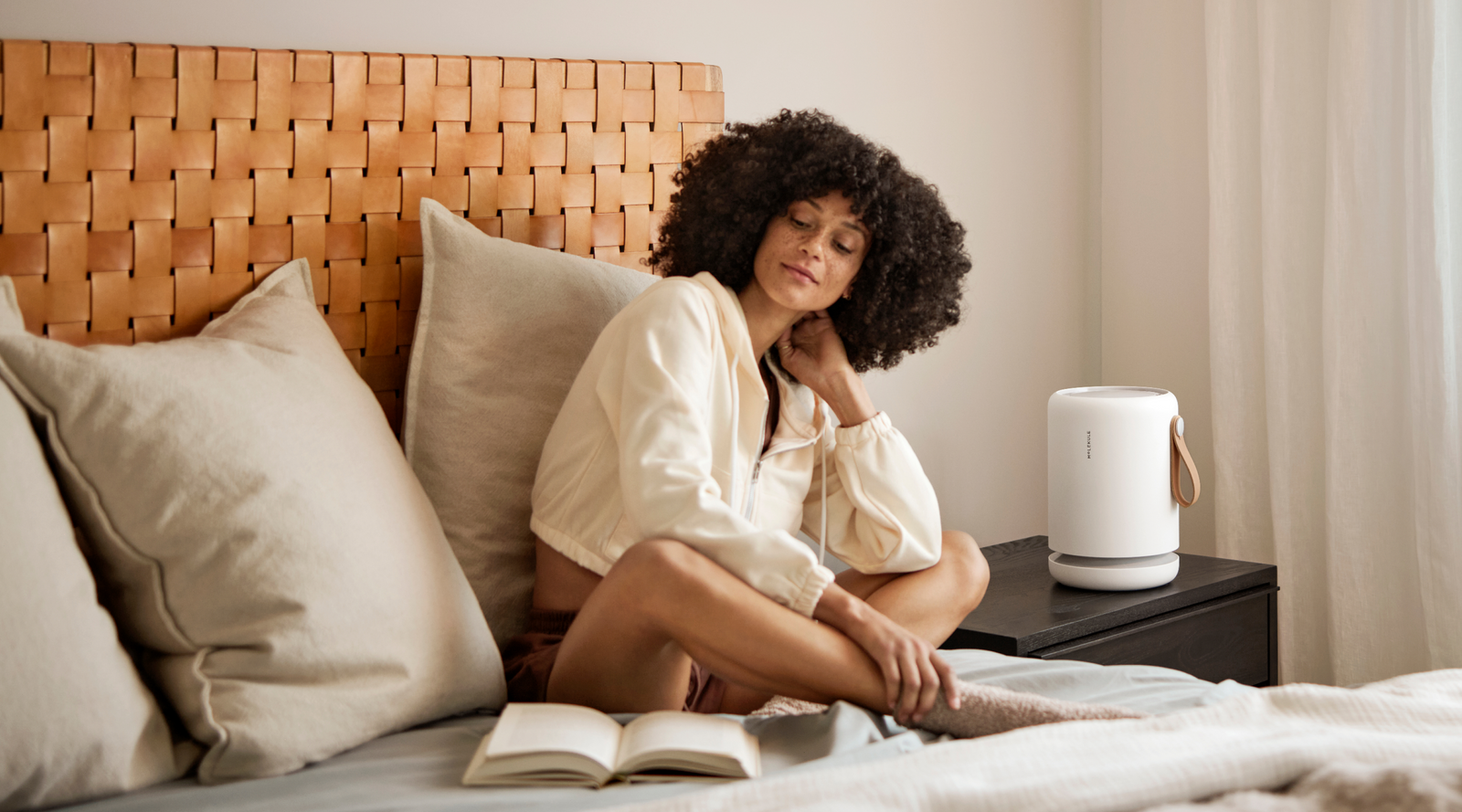Updated by Molekule Staff 6/7/23
It’s not just you, everyone’s allergies are getting worse, and some of us are starting to get allergies when we didn’t before.
Triggers for respiratory allergies are present throughout the year.
- February through May is when trees spread their pollen.
- April through September air is full of grass pollen.
- August through late November is when the weeds are active spreading pollen.
- In the winter there isn’t much pollen, but we spend more time indoors with mold, dust, and pet dander.
Respiratory allergic reactions are part of something known as the atopic triad, which includes asthma and the allergic skin reaction known as eczema. These three tend to occur together, have similar triggers in the environment, and can make each worse.
Your allergies are getting worse due to climate change, more time indoors, your personal immune system, and even the fact that you’re getting older. Let’s take a look at how these factors are conspiring together.
Do allergies get worse as you age?
Yes, allergies get worse as you get older.
Immune cells age just like other cells, as we age, so does our immune system, so over time the cells responsible for neutralizing allergens or mediating the reaction don’t work as well.
The older we get the bigger our exposome gets, and a bigger exposome results in more allergies. Your exposome is like your genome but instead of a long list of genes, it’s a long list of everything you have ever been exposed to, which will include anything you are allergic to.
We acquire chronic medical conditions and ingrained behaviors that could make allergic attacks worse or more frequent. Asthma, for example, can make allergic reactions much worse and more frequent. Separately, smoking tobacco or regularly going places where people are smoking tobacco can also impact your allergies.
How does climate change affect pollen season?
Climate change is making Spring earlier and providing more of the vital nutrient carbon dioxide to plants. Trees, grasses, weeds, and many other forms of life look to the natural changing of the seasons for the optimal time to start their pollination when any offspring will have the right conditions to germinate and start to grow. For the most part, plants react to the ambient temperature but the amount of sunlight available also plays a role for some species.
The impact of humans on the environment is increasing pollen counts in two ways.
- For one, average temperatures on the planet have increased by 2 degrees Fahrenheit since the beginning of the industrial revolution. Plants have adapted to this change by producing more pollen earlier in the year. This adds about 20 days to the length of their seasons, or an additional 5% of the year.
- In addition to changing temperature, the amount of carbon dioxide in the atmosphere has increased by 68% since 1900 and the rate it is released continues to increase. This could have dire consequences for our brain’s ability to function, but for plants carbon dioxide is a nutrient they can use to grow even faster. In recent pollen seasons plants have been taking advantage of this extra carbon dioxide and producing as much as 21% more pollen in North America.
Some studies estimate that airborne pollen concentrations could increase by as much as 200% in the coming years.
Why are seasonal allergies worse indoors?
Since the advent of the global COVID-19 pandemic, most of us have been spending a lot more time indoors. The pollen from trees, grasses, and weeds is typically much less when indoors, but allergens from dust, mold spores, and pet dander are more prevalent. These allergens can be particularly insidious because unlike pollen outdoors, we may inhale dust, mold, or dander for the many hours we spend sleeping.
Dust mites. A significant portion of the physical weight of our bedding is composed of dust, the mites that live in the dust, and their droppings that cause allergies in tens of millions of people. Reduce dust mite allergens by monitoring moisture levels, removing porous materials where they can live, and using dust mite-proof bedding that does not allow them to crawl into the mattress or pillow and set up a home.
Mold. Spores are everywhere and grow easily indoors where they can find moisture and nutrients. Mold allergy is implicated in as many as 20% of allergy clinic patients and some reports say up to 80% of people with asthma are allergic to mold. Once established, a mold colony can create many thousands of spores and do its best to spread them all over the space it occupies. The growth of mold can be curbed by keeping the relative humidity below 80%, and if you find mold in your home contact a professional who can remove it without spreading the spores. These professionals know how to look for spots that new colonies may have cropped up.

Indoor mold
Pet dander. Most allergists know a recommendation to remove a beloved pet is more likely to result in the removal of the allergist. There are many solutions to reducing pet dander, with a good one being to prevent the pet from being in the bedroom to avoid allergens when breathing all night. Many products are available to help remove allergens from surfaces, though soap, water, and a vacuum cleaner will do most of the same work. There are also some immunotherapy shots that may help.
As a result of spending more time at home, we are all exposed to any allergens there to a greater degree. This leads us to another reason that allergies may seem to be getting worse.
Do allergies cause allergies?
Yes, one allergic reaction can make it more likely you will experience another, even if it is a different type of reaction. The atopic triad is a great example because once one has eczema, asthma, or allergies, it’s more likely to develop the others in a process known as the atopic march. It’s not quite clear which of the three arises first- eczema, asthma, or respiratory allergies, but it’s thought that a defect in the skin allows allergens into the bloodstream, which sensitizes the body against them. The body typically produces IgE antibodies in response to allergens it detects, and a buildup of IgE antibodies over time will continue to sensitize the individual more and more. IgE antibodies are responsible for releasing histamine.
Additionally, the body executes an immune response by using specific chemicals to send messages to immune cells. It takes time for these messages to be received, acted upon, and then for the system to be reset. Allergists recommend pretreatment with antihistamines before allergy season for this reason. Once the body starts to get inflamed with histamine and ready to fight, taking antihistamines will have a limited effect since they’ve already communicated their message of inflammation.
Allergies affect the whole immune system
With growing pollen seasons and more time spent indoors, people who suffer from allergies will want to think about ways to best reduce their exposure. This is particularly true for those of us with asthma, because as few as 30 grains of grass pollen per cubic meter can increase asthma hospital admissions.
When the body has an allergic reaction to pollen, that means the immune system is using valuable energy stores and chemicals that could be used against actual pathogens. Allergic reactions can weaken defenses against real infections, respiratory and otherwise. So taking care of your allergies is a good overall wellness plan.
Allergies are regional
Texas is known for cedar fever, a time when cedar trees release visible clouds of pollen that drive many locals away for a month or two. Different plants grow in different places, and different climates foster the growth of different kinds of indoor allergens.
Biological diversity isn’t the only reason that allergies vary from place to place. In urban areas, carbon dioxide can be up to 30% higher due to the density of cars, and temperatures can be up to 3 degrees warmer because building materials don’t dissipate heat as well as the natural environment, and both of these factors can increase pollen in the air. In addition, particles from diesel fuel are thought to increase the impact of airborne allergens. Finally, urban arborists tend to prefer pollen-producing male plants instead of seed and berry dropping female plants in a practice known as botanical sexism. It is thought that seeds and berry are sticky and unsightly while pollen tends to blow away, but this doesn’t take into account that berry and seeds don’t cause allergic reactions.

In short, yes, allergies are getting worse every year due to a variety of human-induced factors, but there are a lot of ways to avoid allergens. One of the most important is to remove your outside clothes when you get in the house so you don’t bring pollen in with you. This includes the mask you are wearing during the pandemic, you don’t want to start the day putting yesterday’s pollen on your face.
Any air filtering device you may have is likely to help with removing allergens, as well. While some particles, including pet dander or dust mite droppings are usually fairly large and can be trapped by most filters, other allergens such as fragments of mold spores and pollen grains can be much smaller. If you’re sensitive to these allergens, it’s a good idea to check your filters or air purifier to ensure that they are rated to capture smaller particles. Or, alternatively, an air purifier that destroys organic substances might help to reduce the tiny fragments in the air.
Keep an eye on this blog, and our Facebook, Instagram, and Twitter for more information on what’s in your air.







